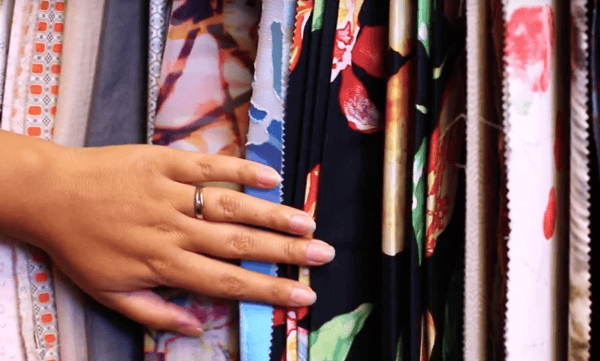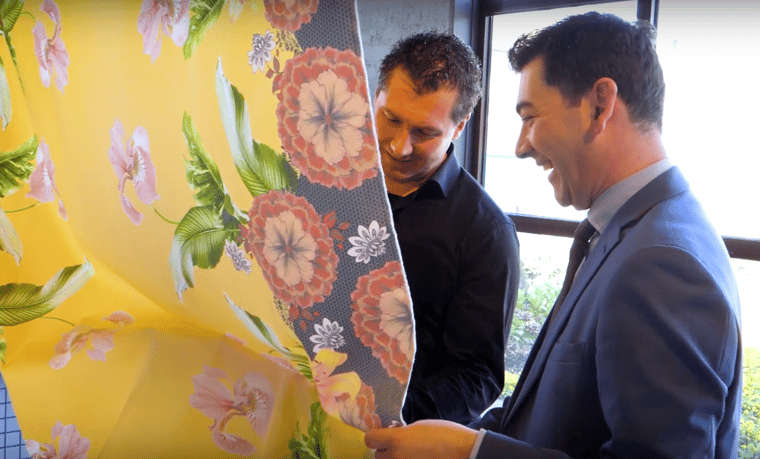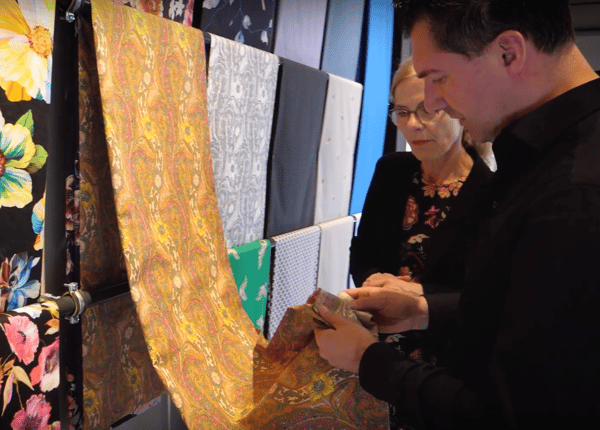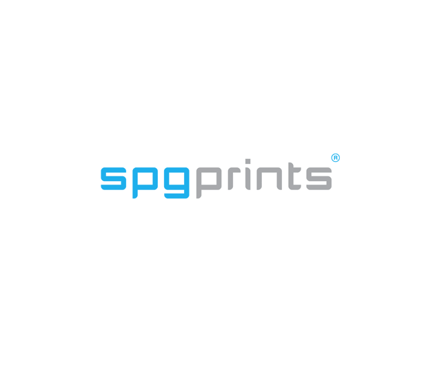Awareness around the importance of sustainability is growing rapidly in a lot of industries. The textile industry included. Sustainability is all about meeting society’s present needs, without compromising the ability of future generations to meet their own. In other words: we want to preserve our planet, without having to compromise on quality.
Now the environment is more on top of mind, the market demands higher levels of sustainability for future generations. In the textile industry, direct sublimation printing is an answer to this new, but pressing demand. It might even be one of the most future-proof printing processes. In our Webinar On-Demand, experts explain why.
Disperse and sublimation printing
A commonly used method to print on polyester textile fabrics is direct disperse printing. This printing process involves pre-treating the fabric with chemicals and it is using a steaming process to bond the ink to the fabric. After that, a washing step is needed to wash off the non-bonded inks. Direct disperse printing is known for its high fastnesses and good through print quality but requires a steaming and washing process, which uses a lot of energy and water. This makes this type of printing less sustainable.
Want to learn more about different printing methods, including disperse printing? In this blog, I explain the advantages and disadvantages of different printing processes in depth.
Printing companies looking for a way to increase sustainability in their production process should therefore evaluate other printing methods. In terms of sustainability, paper sublimation printing is a more environmentally friendly printing solution for polyester fabrics, because it does not need steaming and washing, a simple calendering step is all. This makes sublimation printing a better choice, although this printing method still requires the use of sublimation paper. The design is being printed on paper first (mirrored) in a sublimation printer. The paper is then fed into a calendar together with the fabric. The calendar uses heat and high pressure to transfer the ink to the fabric. Heat and pressure cause the ink to transition directly from its solid state into gas, which is called sublimation. Hence the name “sublimation printing”.
Paper sublimation printing has a few downsides besides the necessity of using paper. This specific printing method does not deliver the same levels of throughprint and fastnesses as direct disperse printing. With sublimation printing, the ink will only stick to one side of the fiber, meaning the print will only be visible on one side of the fabric.

A more sustainable solution
Recently, a more sustainable form of sublimation printing has gained in popularity: direct sublimation printing. Direct sublimation printing combines the sustainability advantages of sublimation printing with the better quality features of direct disperse printing. With direct sublimation printing, similar low-energy sublimation inks are printed directly onto the polyester fabric. That fabric then goes directly into the calander for the sublimation process, without the use of paper.
As the use of paper is being eliminated from the printing process, the process is more environmentally friendly. Besides, direct sublimation printing ensures that the ink can penetrate the fiber in a better way. This significantly improves both the penetration into the fabric as well as the fastnesses of the fabric, although the results of direct disperse printing on these topics are still superior.
Besides the numerous advantages of direct sublimation printing, this specific printing method requires a significant initial investment. Because the fabric has to move through the printer a more sophisticated sticky belt is needed, as in all direct-to-fabric digital printers. This belt solution makes the printers more expensive and, therefore, eminently are more suitable for bigger volumes of fabrics. For this specific reason, direct sublimation printing is mainly profitable for larger printing companies and industrial applications. When printing larger volumes, the savings on paper costs outweigh the higher costs of equipment.
Get your free recording of our Webinar On-Demand and discover if Sublimation Printing is the fitting solution for your company:
.jpg?width=600&name=PHOTO-2020-03-06-08-15-08%20(2).jpg) Direct Sublimation printing at Ssangho (South-Korea) using SPGPrints JAVELIN direct sublimation digital textile printing
Direct Sublimation printing at Ssangho (South-Korea) using SPGPrints JAVELIN direct sublimation digital textile printing
Sustainable sportswear
One type of brand in particular is seeing the value of direct sublimation printing and the positive impact it has on sustainability: sports brands. Sportswear is mainly made of polyester and is often washed more frequently, which means it requires excellent fastnesses. Therefore, direct disperse printing has always been the only solution to print sportswear on polyester fabrics. But recently sports brands like Nike, Puma and Adidas have noticed that their sportswear is increasingly being used as fashion items, rather than their intended purpose as sportswear. That gives these brands the opportunity to slightly concede on wash fastnesses, in order to increase the sustainability of their clothing.
Direct sublimation is embraced by the big sports brands and washing requirements are slightly lowered in order to produce more sustainable clothing. This makes sportswear a wonderful example of the increased awareness around sustainability in the textile printing industry. Hopefully, many more brands will follow their example so together we can create a better future for the next generation.
From conventional to digital: is it worth the investment? Try it with a Personal Sample!
Do you feel that, after reading this blog, digital sublimation printing could be a good solution for your company? No big investment is needed to get the answer: try it first-hand with a Personal Sample!
With a Personal Sample, you can use your own application or product to experience what Digital Sublimation Printing can do for you and how you manufacture your own product future-proof.







